The painting depicts a suggestive roman country landscape with the Milvio bridge crossed by some wayfarers. In the foreground, in front of the bridge, some figures liven up the scene. The bridge can be safely identified with the famous Milvio bridge, one of the oldest and most important in Rome, Italy. Originally made of wood and probably built by a censor of the gens Mulvia in the IV century BC, it was rebuilt in masonry in 109 BC, by the censor Marco Emilio Scauro. During the Middle Ages the bridge remained the main access road to Rome.
Under Pope Callisto III (1455) the wooden tower was replaced by a square tower. On June 26, 1731, the statue of Saint John of Nepomuk, depicted in the painting, was placed on the parapet of the bridge at one end of the bridge. The sculpture was commissioned to Agostino Cornacchini (Italy - Pescia, 26 August 1686 – Rome, 1754) by the Bohemian nobleman, Cardinal Michele Federico d'Althann. Saint John of Nepomuk, of Bohemian origin, drowned in Moldovan in 1393. He is considered protector of the drowned and is invoked against the floods. He is also considered protector of the secret oaths and the putto placed at the base of the statue has the index of the right hand on his mouth almost to recall the silence. The saint was canonized in 1729 by Benedict XIII and the statue was placed in 1731. It is therefore after this moment that the painting must be dated, executed anyway by the end of the eighteenth century since in the nineteenth the physiognomy of the bridge changes. In 1805 Pope Pius VII commissioned the Valadier architect of the works of accommodation.
Two lateral arches were built and the tower is renovated with the opening of the large entrance arch. In 1825, two statues were placed in front of the tower, by Francesco Mochi, from the middle of the 17th Century, and representing the Baptism of Christ. A last statue takes its place on Milvio bridge in 1840: it is the statue of the Immaculate Virgin of Domenico Pigiani placed in a position symmetrical to that of St. John of Nepomuk. The bridge, made partly jump from Garibaldi in 1849 to hinder the advance of the French, was restored in 1850 by Pius IX.
Ponte milvio is very dear to the Romans and is remembered for several historical events. In the days of the conspiracy of Catilina, Cicero had his men stationed on the bridge to set up an ambush and have the delegates of the Rooks arrested, who were in Rome to make a pact with some conspirators. The bridge was then the scene of clashes between Otone and Vitellio in 69 A.D. and still made the scene at the triumphal entrance of Settimio Severo and his troops in 193 A.D. In 312 A.D. the final story of the famous battle of Milvio bridge, fought between Maxentius and Constantine took place: after the withdrawal of the troops of Maxentius, the emperor in the attempt to cross the bridge fell into the Tiber and lost his life.
There were several eighteenth-century artists who were inspired by the charm of the ancient Milvio bridge, at a time when the Roman landscape and the ancient remains were subjects much in demand by the commissions. Among the numerous examples there is the engraving of Giuseppe Vasi, who proposes a point of view very similar to that of our canvas, and Giovanni Battista Piranesi. In both the statue of Saint John of Nepomuk has already been placed and we are before the intervention of the Valadier.
The painter should be sought after among the artists active in Rome in the mid-eighteenth century and among the followers of Paolo Anesi.
Anesi (Rome, 9 July 1697– Rome, 1773) is one of the most important painters and engravers of the eighteenth century. He specializes in landscape painting and etching techniques, reproducing, with a certain freedom, the surroundings of Rome.
In the view it moves away from the analytic and documentary rule of Vanvitelliana and the decorative pomp of contemporary Giovanni Paolo Pannini and his landscapes are often enlivened by figures of wayfarers.
Stylistically the painting in question can be compared with works of Anesi, ascribing the painter’s hand to the circle of his followers.
click on the word expertise to read the Italian expertise: EXPERTISE


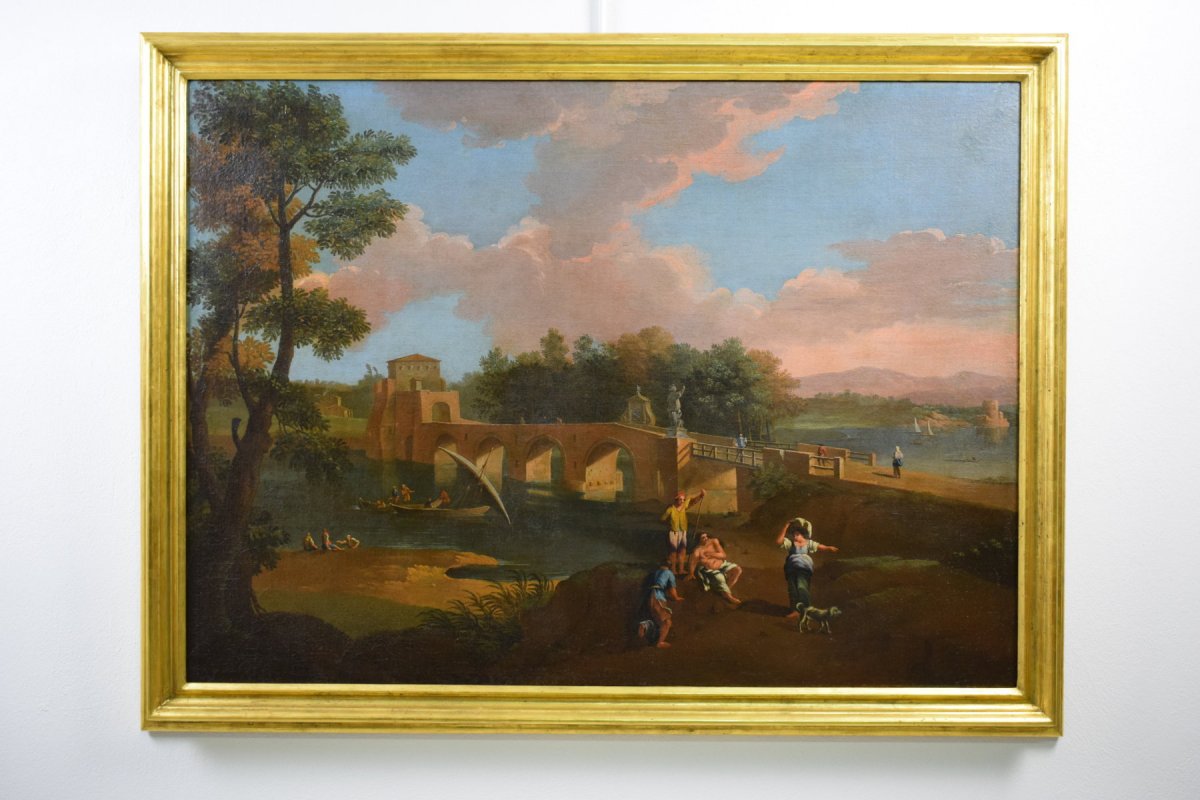

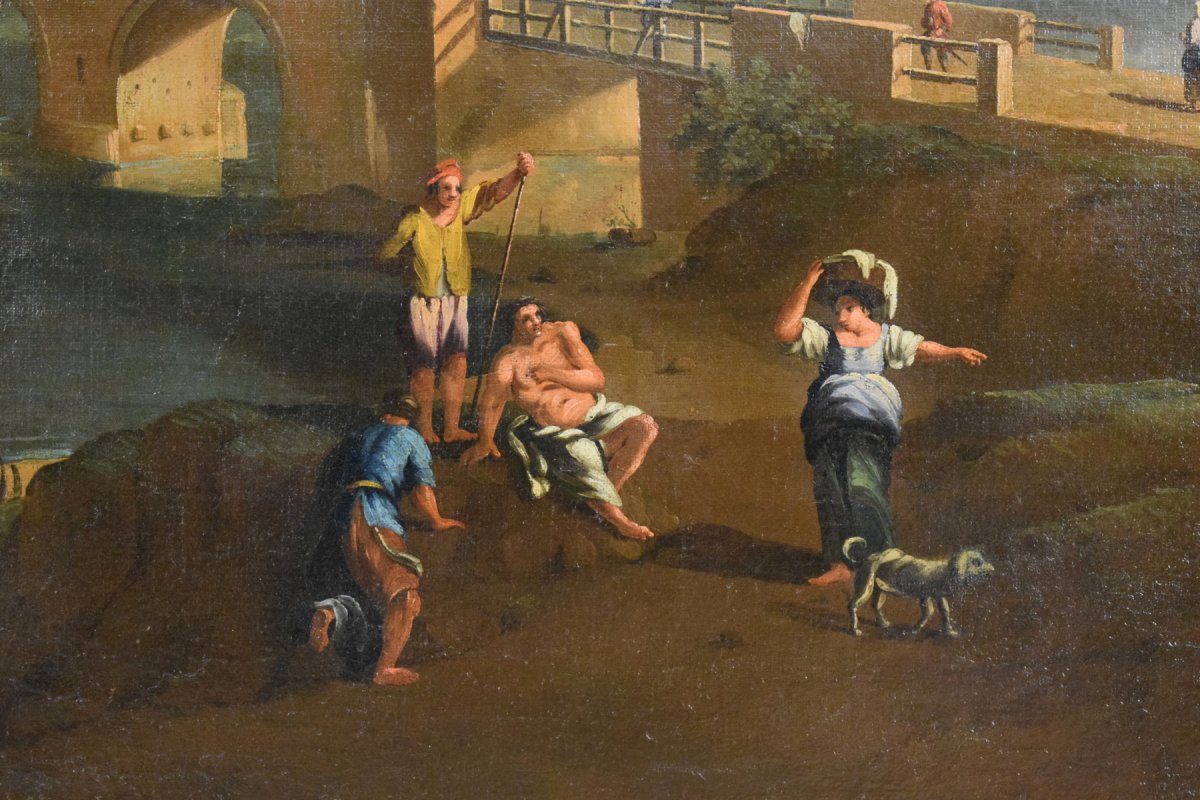
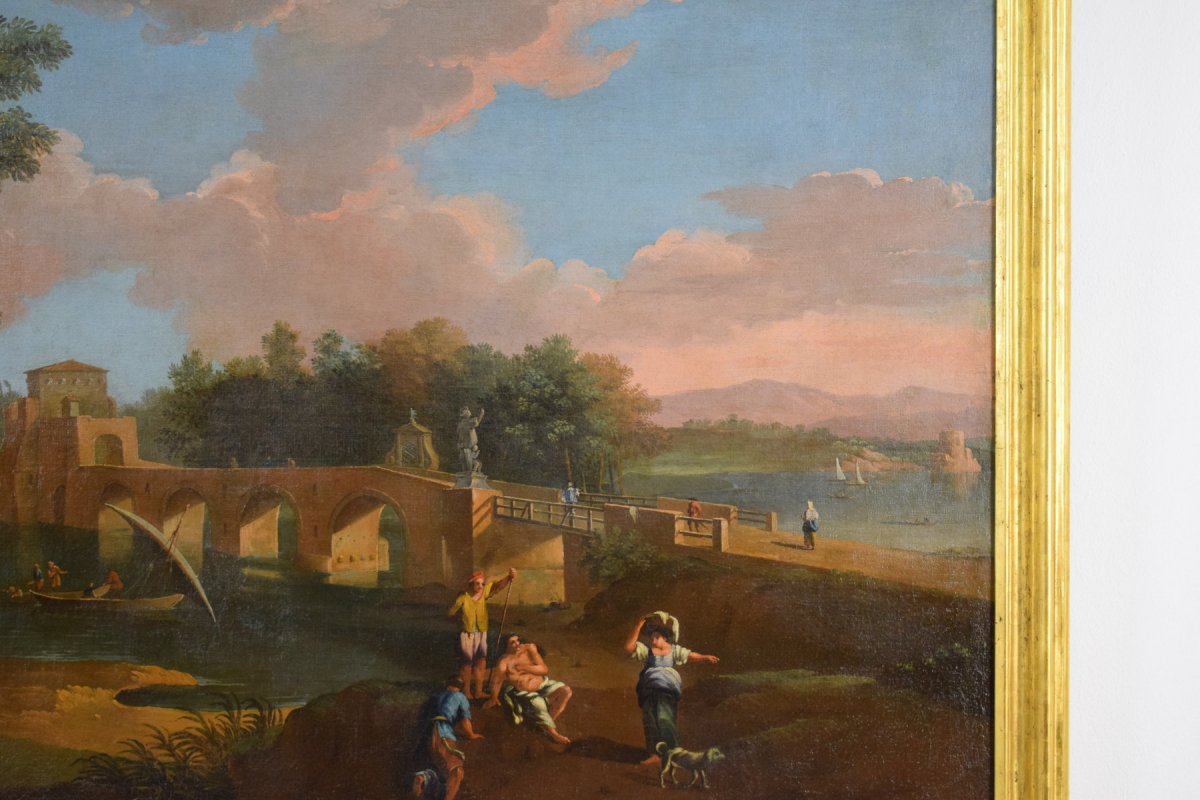
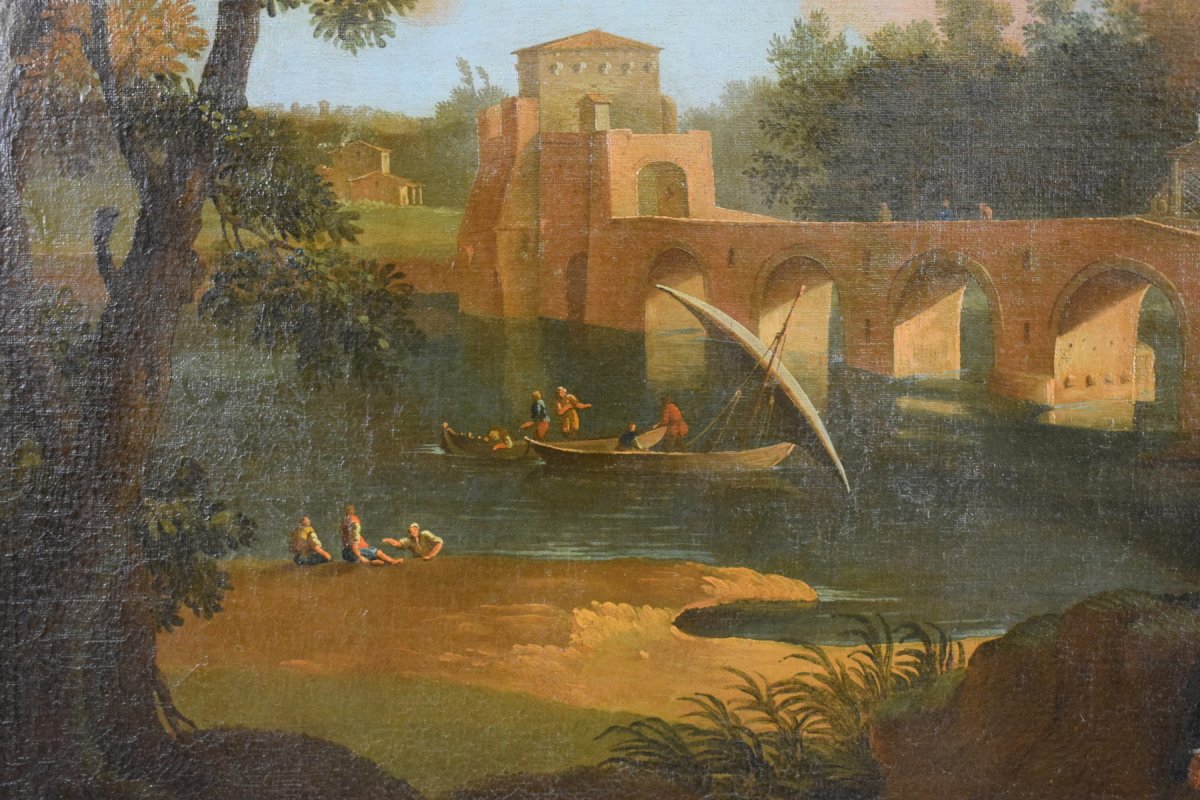


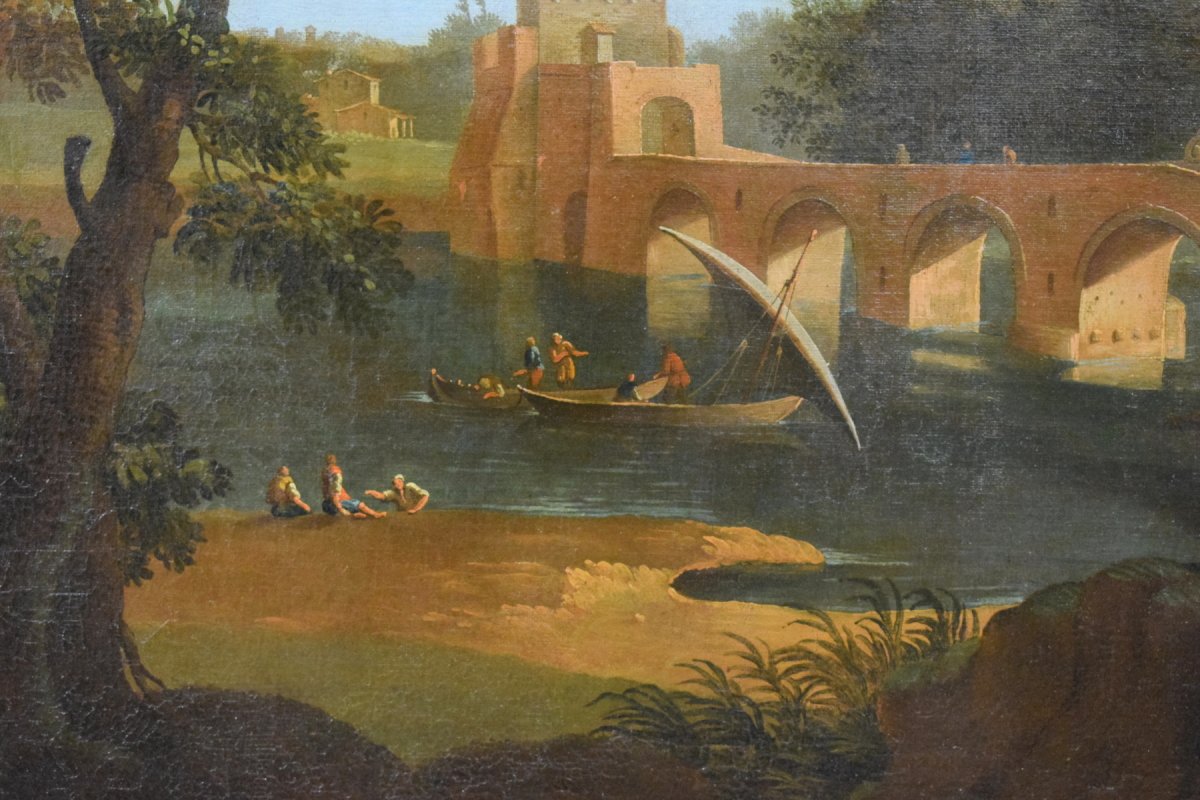
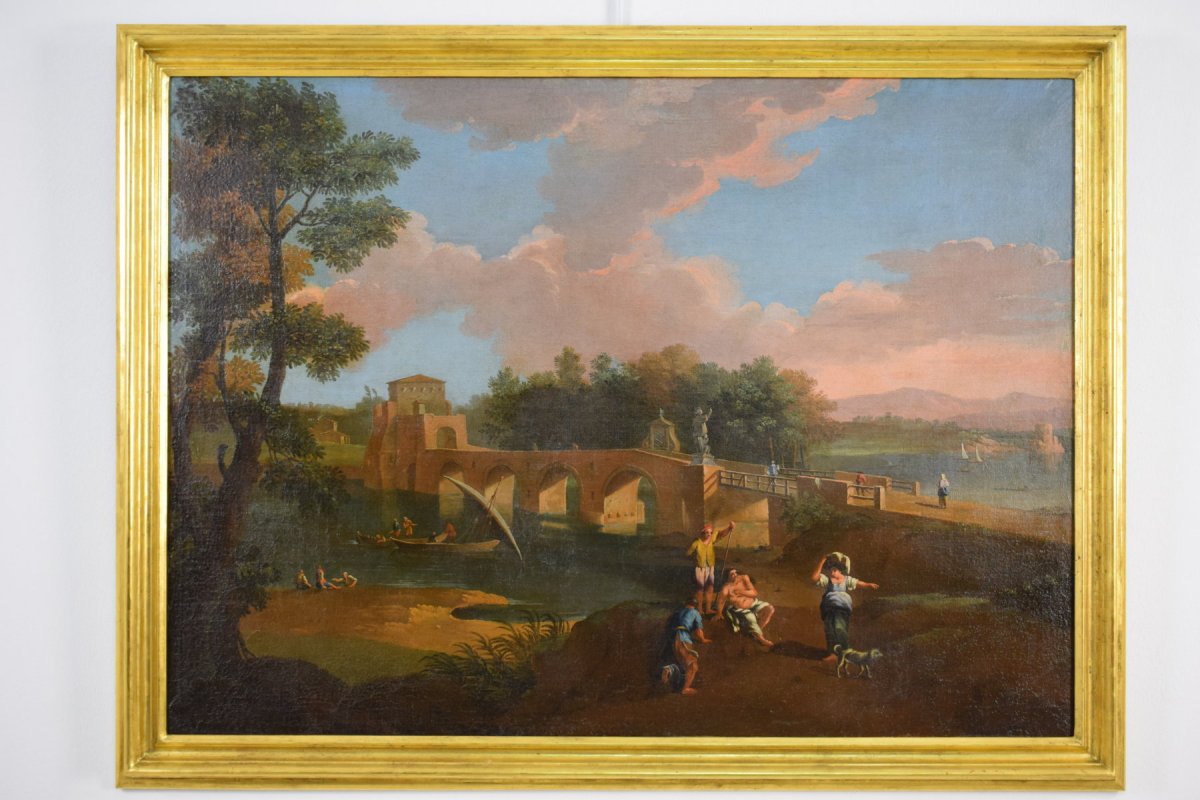

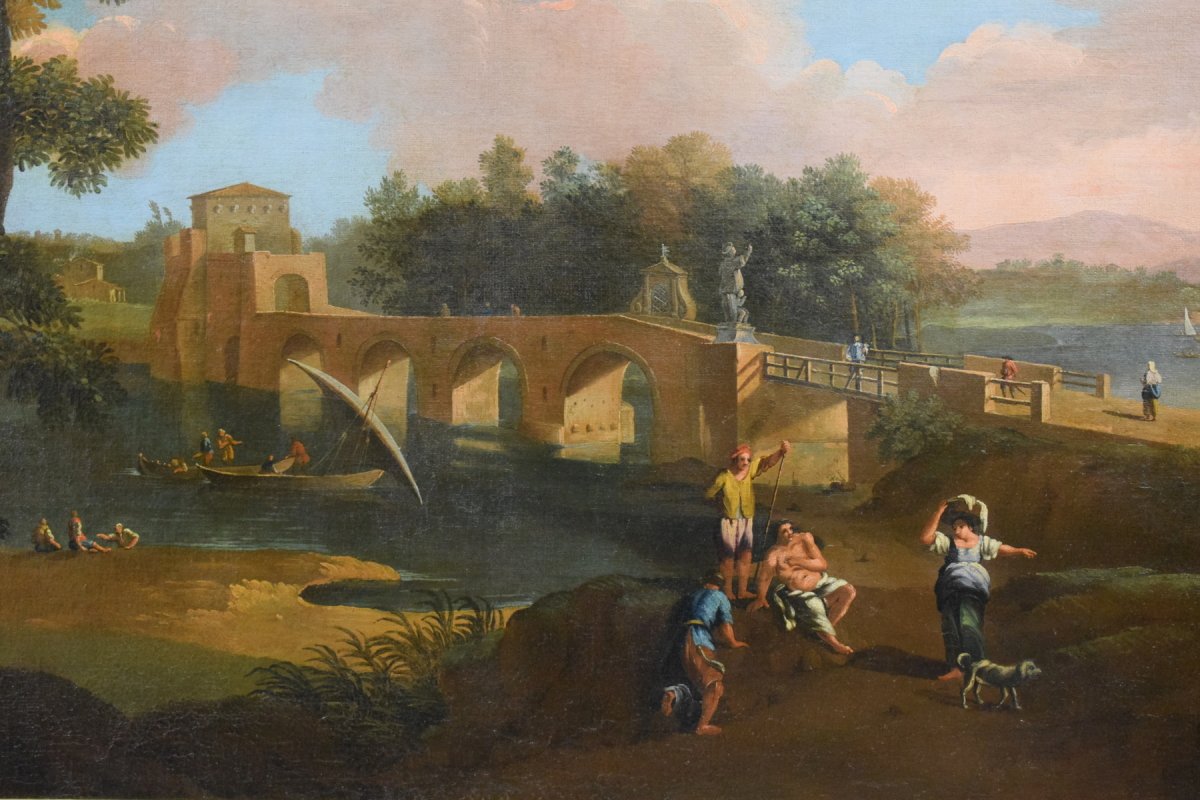












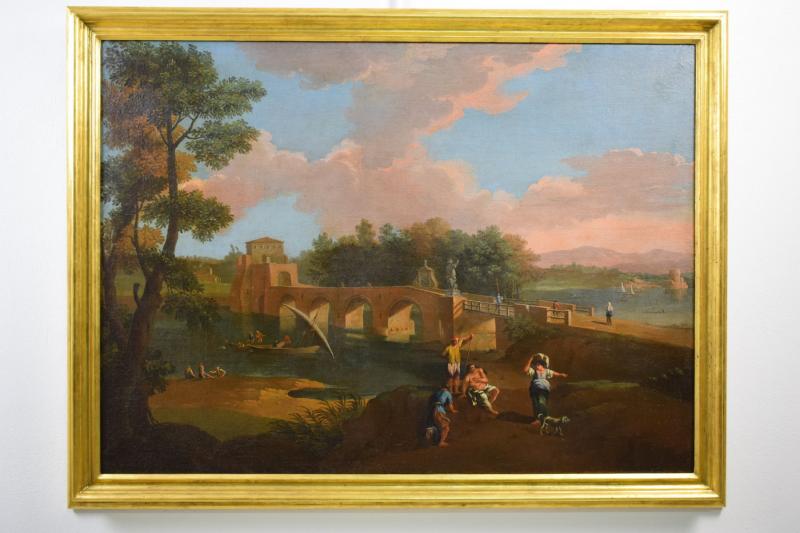

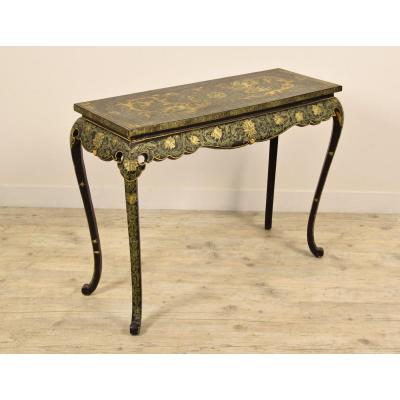





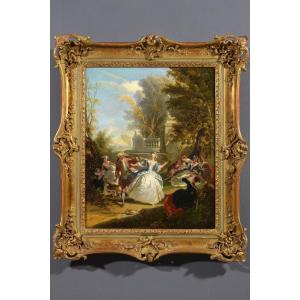



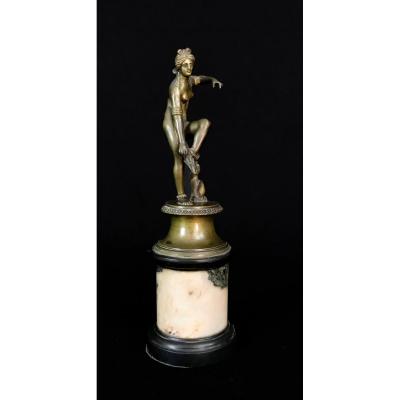

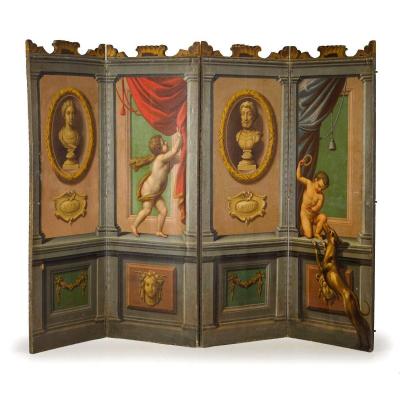



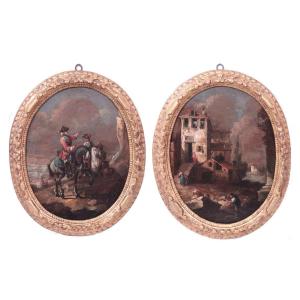


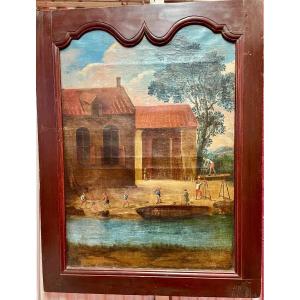



 Le Magazine de PROANTIC
Le Magazine de PROANTIC TRÉSORS Magazine
TRÉSORS Magazine Rivista Artiquariato
Rivista Artiquariato